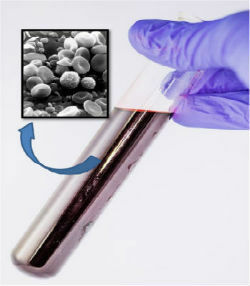Ozone is a gas that has the molecular formula O3, and due to its chemical characteristic, it easily donates oxygen molecules to free radical species such as nitrogen, hydrogen, bromine and chlorine. The ozone coating that surrounds the Earth and protects it from various types of radiation is known as the ozone layer.
When U.V (ultraviolet rays) strike an ozone molecule, a release occurs of energy responsible for breaking the bonds between the atoms, at that moment a molecule is released of the2 and a free oxygen atom. See the equation that represents this process:
O3 (g) + hν → O• + O2 (g)
Note that the product of this reaction is an O molecule.2 and the free oxygen that will bind to radicals: nitrogen, hydrogen, bromine or chlorine. These radicals occur naturally in the stratosphere, on the other hand there are CFC's (chlorofluorocarbons) that are produced by man through pollution.
CFC's contribute to the depletion of the ozone layer, they cross the lower layers of the atmosphere and accumulate in the upper layers from the stratosphere, U.V. causes photodecomposition of CFC molecules and these release chlorine, which is a catalyst for the destruction of ozone. One chlorine atom can destroy up to 100,000 ozone molecules.
But exactly where do CFCs come from? They are gases used in refrigeration systems, are found in solvents, plastic foams, aerosol containers (sprays) and many others. These gases only become dangerous when they reach the stratosphere, that is, they are harmless when used because they do not react spontaneously.
The CFC's present in the Earth's atmosphere are not carried away by rain, because they are very stable and it is precisely this property that make it so dangerous: they pass through the atmosphere intact, accumulating in the stratosphere where they are responsible for the destruction of the layer of ozone.
What are the possible consequences of the depletion of the ozone layer?
• Increased incidence of skin cancer, due to the action of ultraviolet rays;
• In recent years it has been found that polar glaciers are melting, causing a rise in water levels in the oceans.
Do not stop now... There's more after the advertising ;)
By Líria Alves
Graduated in Chemistry
Brazil School Team
See more!
Consequences of the destruction of the ozone layer
Would you like to reference this text in a school or academic work? Look:
SOUZA, Líria Alves de. "How is the ozone layer destroyed?"; Brazil School. Available in: https://brasilescola.uol.com.br/quimica/como-destruida-camada-ozonio.htm. Accessed on June 27, 2021.


